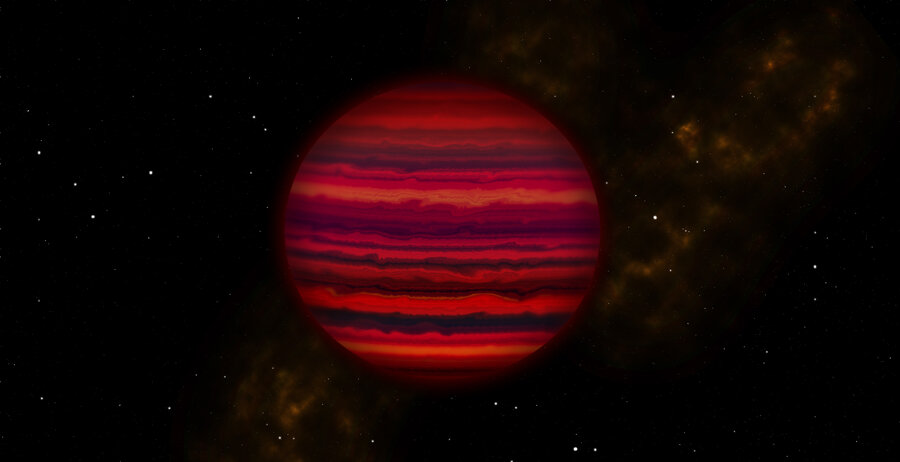For first time, astronomers find water clouds beyond our solar system
WISE 0855. That's the name astronomers gave the coldest brown dwarf yet discovered – in fact the coldest known object outside our solar system.
Neither a planet nor a star, WISE 0855 has now made history again, as the first object outside our solar system to have clouds of water.
As chilly as our own North Pole, the brown dwarf is a mere 7.2 light years away, inhabiting the fourth closest system to our sun, yet it was only discovered in 2014.
Scientists hope to use WISE 0855 to better understand Jupiter, which has similar properties, as well as other planets and bodies with cloudy atmospheres.
"We would expect an object that cold to have water clouds, and this is the best evidence that it does," said Andrew Skemer, assistant professor of astronomy and astrophysics at UC Santa Cruz, and first author of the paper detailing the findings, to be published in Astrophysical Journal Letters.
When WISE 0855 was first discovered, there were tentative indications of water clouds, but the evidence was insufficiently robust. So, researchers shouldered the burden of traveling to Hawaii, home of the Gemini North telescope.
Over 13 nights, the team used Gemini to employ the wonders of spectroscopy, yielding the first “light fingerprint” for WISE 0855. This not only provided far more substantial evidence of water vapor in the brown dwarf’s atmosphere, but also confirmed its frosty temperatures, which dip below -10 degrees Fahrenheit.
Gemini allows such fine observations in part because of its location on Mauna Kea, where the scarcity of water vapor in the air provides minimal interference.
“We pushed the boundary of what could be done with a telescope here on Earth,” said co-author Jacqueline Faherty of the Carnegie Department of Terrestrial Magnetism in a press release. “And the result is spectacular."
Like all brown dwarfs, WISE 0855 is thought to have started its life in the same manner as a star, a giant ball of gas collapsing in on itself. But, unable to attain sufficient mass to spark the nuclear reactions that allow stars to radiate their light, it faded into what astronomers call a “failed star,” or brown dwarf – something many times bigger even than giant planets like Jupiter, but still too small to become a star.
Yet WISE 0855 is small for a brown dwarf, with only five times the mass of Jupiter. Combined with its frigid temperatures, the similarities are sufficient to allow comparisons to be drawn.
"Now that we have a spectrum, we can really start thinking about what's going on in this object," Dr. Skemer said in a press release. "Our spectrum shows that WISE 0855 is dominated by water vapor and clouds, with an overall appearance that is strikingly similar to Jupiter."
For example, the spectra of Jupiter and WISE 0855 display remarkably similar water absorption characteristics. One significant difference, however, is an abundance of phosphine on Jupiter, which is indicative of a turbulent atmosphere – something the brown dwarf seems to lack.
"The spectrum allows us to investigate dynamical and chemical properties that have long been studied in Jupiter's atmosphere,” said Skemer, “but this time on an extrasolar world."







